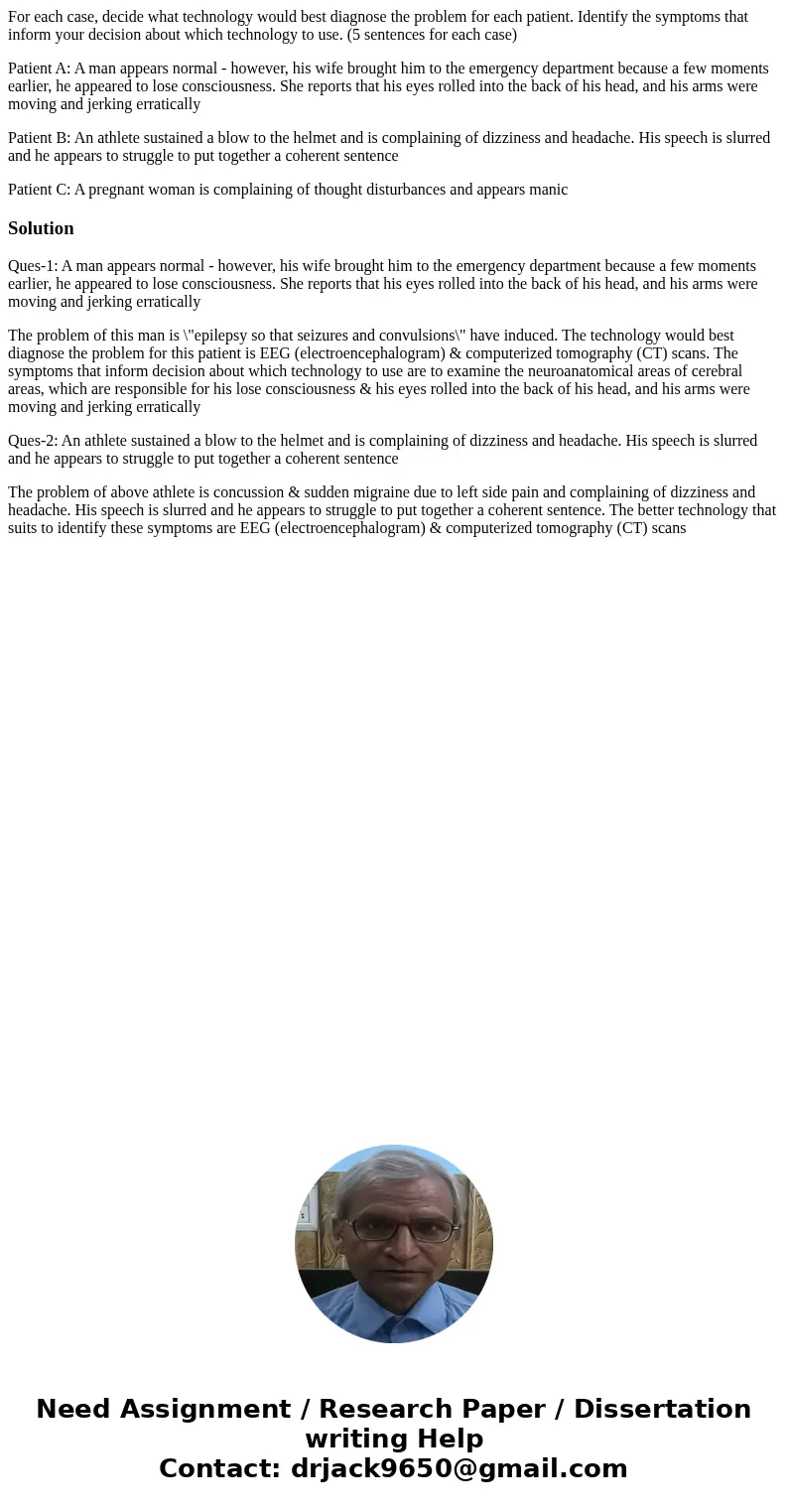For each case decide what technology would best diagnose the
For each case, decide what technology would best diagnose the problem for each patient. Identify the symptoms that inform your decision about which technology to use. (5 sentences for each case)
Patient A: A man appears normal - however, his wife brought him to the emergency department because a few moments earlier, he appeared to lose consciousness. She reports that his eyes rolled into the back of his head, and his arms were moving and jerking erratically
Patient B: An athlete sustained a blow to the helmet and is complaining of dizziness and headache. His speech is slurred and he appears to struggle to put together a coherent sentence
Patient C: A pregnant woman is complaining of thought disturbances and appears manic
Solution
Ques-1: A man appears normal - however, his wife brought him to the emergency department because a few moments earlier, he appeared to lose consciousness. She reports that his eyes rolled into the back of his head, and his arms were moving and jerking erratically
The problem of this man is \"epilepsy so that seizures and convulsions\" have induced. The technology would best diagnose the problem for this patient is EEG (electroencephalogram) & computerized tomography (CT) scans. The symptoms that inform decision about which technology to use are to examine the neuroanatomical areas of cerebral areas, which are responsible for his lose consciousness & his eyes rolled into the back of his head, and his arms were moving and jerking erratically
Ques-2: An athlete sustained a blow to the helmet and is complaining of dizziness and headache. His speech is slurred and he appears to struggle to put together a coherent sentence
The problem of above athlete is concussion & sudden migraine due to left side pain and complaining of dizziness and headache. His speech is slurred and he appears to struggle to put together a coherent sentence. The better technology that suits to identify these symptoms are EEG (electroencephalogram) & computerized tomography (CT) scans

 Homework Sourse
Homework Sourse